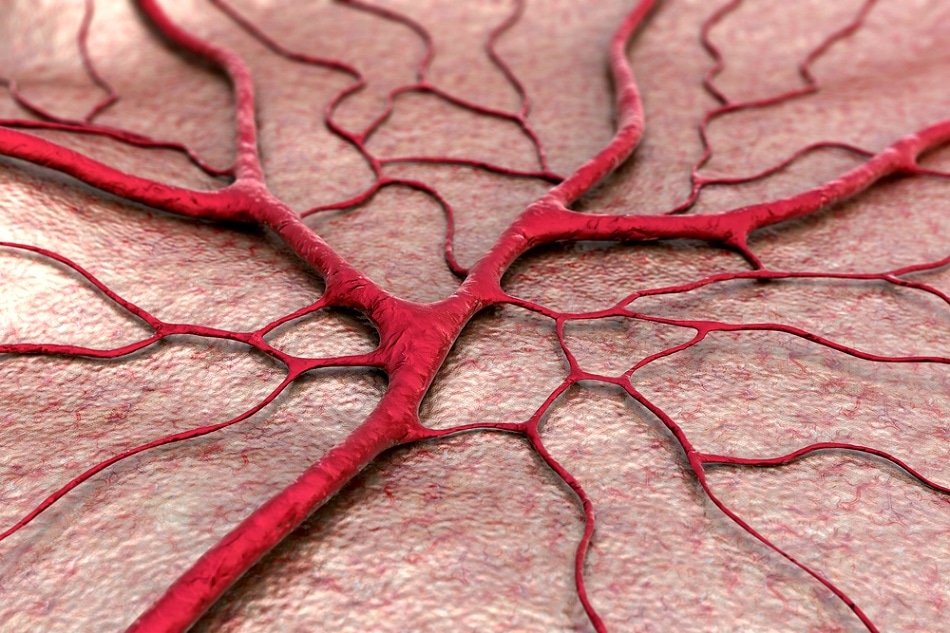Nov 4 2016
 UGREEN 3S/Shutterstock.com
UGREEN 3S/Shutterstock.com
Physical forces such as shear stress of flowing blood and blood pressure are important parameters for the tension of blood vessels. Over many years, researchers have been working to develop a measurement sensor that can transform mechanical stimuli into molecular response, which consequently manages the tension in blood vessels.
Researchers based at the Max Planck Institute for Heart and Lung Research in Bad Nauheim have now discovered a similar sensor implanted in the blood vessel wall inner layer: the molecule under consideration, called PIEZO1, is a cation channel could one day prove to be a starting point for high blood pressure treatment.
Water pipes that are commonly used as models to describe the functioning of blood vessels are lifeless and rigid. In contrast, PIEZO1 comprises of an elastic vessel wall made of disparate layers of extremely sensitive tissue that can respond to the altering demands of the body by increasing the vessel diameter and the consequent intensification of the blood flow.
The information required for this procedure is received by the blood vessel from the blood stream itself:
One of the most important control mechanisms is the physical forces exerted by the blood on the interior of the blood vessels. The blood vessel interior is lined with endothelial cells. These register the intensity of the blood flow using molecular antennae.
Stefan Offermanns, Director, Max Planck Institute for Heart and Lung Research
The vessel musculature is relaxed and the blood vessel is expanded when the endothelial cells liberate nitric oxide as well as other elements in response to this stimulus.
PIEZO1 Translates Physical Stimulus into Molecules
In addition to the blood pressure level, the crucial factors that have an impact on the endothelium through the bloodstream are the mechanical shear forces. These forces are crucial in the regulation of blood flow.
Previously, we knew very little about how endothelial cells register the mechanical forces of the flowing blood at molecular level. With PIEZO1, we have now discovered a cation channel that forms the interface that transposes the physical stimulus into a molecular reaction. This, in turn, controls the tension of the blood vessel wall.
Shengpeng Wang, Max Planck Institute for Heart and Lung Research
Initially, researchers at the Max Planck Institute noticed that PIEZO1 activates a signaling cascade in cultivated endothelial cells when shear stress acts on it: Wang said that “PIEZO1 is activated by the mechanical stimulus. It causes calcium cations to flow through the channel into the endothelial cells and thereby trigger a chain reaction.” Nitric oxide is released as a result of this signaling cascade, consequently expanding the blood vessel.
High Blood Pressure Without PIEZO1
The researchers could confirm their observations from the laboratory in living organisms by working with genetically modified mice. An inactive PIEZO1 gene in these mice caused an increase in blood pressure compared to control animals.
Due to the lack of the PIEZO1 molecular sensor, the shear forces were not correctly perceived by the endothelial cells and the entire signalling cascade was scarcely activated at all.
Shengpeng Wang, Max Planck Institute for Heart and Lung Research
The cells subsequently released lesser nitric oxide, resulting in high tension of the blood vessel musculature. As a consequence, there was a permanent increase in blood pressure in the living organisms.
PIEZO1 can prove to be of therapeutic importance, if it can be demonstrated as a much-sought sensor which the endothelial cells use to register the bloodstream mechanical forces to manage the tension in blood vessels.
Offermanns said, “We would be able to activate PIEZO1 pharmacologically using a specific active ingredient. The cells would react to it in exactly the same way as they would to shear stress.” He further added “For this reason, active ingredients that stimulate PIEZO1 could offer a promising option for the treatment of different forms of high blood pressure.”
PIEZO1 can also prove to be the therapeutic starting point for diseases caused due to spasmodic narrowing of the blood vessels.